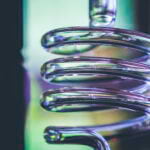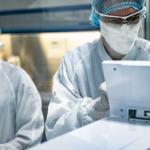
Generation of 1,2-Difluorobenzene via a Photochemical Fluorodediazoniation Step in a Continuous Flow Mode
About 30% of all APIs carry a Fluor atom, and many APIs need at least one fluorinated intermediate during their synthesis.
Using continuous flow chemistry for fluorination steps could improve reactions performances in terms of reaction time and conversion ratio .
Discover in this publication from the OPR&D journal (Organic process research & development), how SEQENS R&D team, in collaboration with C. Oliver Kappe, has developed a proof of concept study for the synthesis of 1,2-difluorobenzene from 2-fluoroaniline via a photochemical Balz-Schiemann reaction leading to a purer reaction profile compared to the thermal fluorodediazoniation.
By performing the photochemical fluorodediazoniation step in continuous flow using a high power 365 nm LED, reaction performance could be significantly improved compared to the reported batch procedure with respect to:
– reaction time (10 min vs 6−18 h)
– conversion (>99% vs 82%)
> Discover the full publication on ACS Publications <
Generation of 1,2-Difluorobenzene via a Photochemical Fluorodediazoniation Step in a Continuous Flow Mode
Kevin Simon , Desiree Znidar , Julien Boutet , Gérard Guillamot , Jean-Yves Lenoir , Doris Dallinger* , and C. Oliver Kappe*
Abstract
A proof-of-concept study for the synthesis of 1,2-difluorobenzene from 2-fluoroaniline via the Balz–Schiemann reaction using HF/pyridine as the fluorinating reagent is reported. Key to success for a fast reaction, a clean reaction profile─and thus high product selectivity─was a photochemically induced fluorodediazoniation of the in situ-generated diazonium salt performed in a continuous flow mode. A high-power 365 nm light-emitting diode provided a more robust and efficient irradiation system compared to a medium-pressure Hg lamp with respect to the reaction performance on scale-out runs and reaction time, allowing the generation of 1,2-difluorobenzene within a 10 min residence time and a product selectivity of ≥95% at full conversion.




